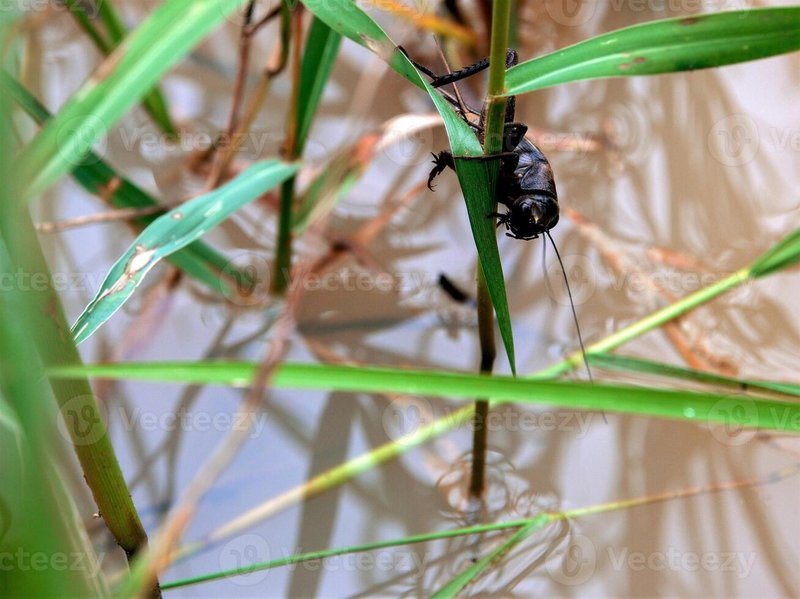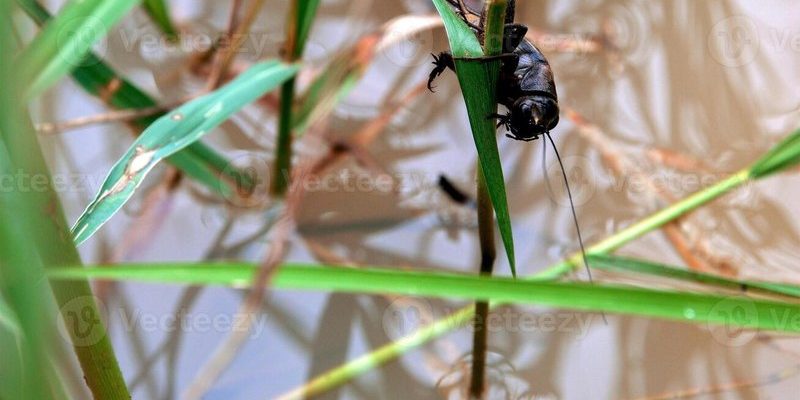
When you think of crickets, you might picture those little green creatures chirping outside on a warm summer night. But crickets are so much more than that! They are fascinating insects belonging to the family Gryllidae, and they can be found all over the world. With over 900 species, these little guys come in various shapes, sizes, and colors.
Crickets are known for their unique sound—known as chirping—which males produce to attract females. This sound is just as iconic as the cricket itself! But there’s much more to learn, from their life cycle to their diet and even their role in ecosystems.
So, pull up a chair and let’s dive deeper into the world of crickets. By the end of this article, you might just appreciate these tiny chirpers a lot more!
Physical Characteristics of Crickets
Crickets have some pretty fascinating physical traits that set them apart from other insects. These creatures typically have long antennae and a cylindrical body, which helps them navigate through their environments easily. Depending on the species, crickets can range from a mere half an inch to over four inches in length!
One of the most striking features of crickets is their wings. While not all species are capable of flight, the ones that are often have larger, leathery wings that they use to flutter from one place to another. Interestingly, the males are the ones that usually possess wings and produce that delightful chirp we love to hear.
Speaking of chirping, that sound is created by rubbing their wings together in a process called “stridulation.” Isn’t it interesting how a simple act can produce such a distinctive noise? This is a key part of their mating ritual, as females are attracted to the specific sounds made by males. Each species has its own unique chirp, which makes identifying them a little easier—if you’re up for the challenge!
Life Cycle of a Cricket
Understanding the life cycle of crickets can give you a greater appreciation for these creatures. Crickets undergo a process called incomplete metamorphosis. Unlike butterflies that completely transform from caterpillar to chrysalis to adult, crickets go through three stages: egg, nymph, and adult.
The female cricket lays eggs, usually in soil or rotting plant material. These eggs are small and can be hard to spot, often hatching after a couple of weeks. Once hatched, the tiny nymphs resemble miniature adults but lack wings. They will molt several times—sometimes up to ten—before they become fully grown adults. This process can take anywhere from a couple of weeks to several months, depending on the species and environmental conditions.
Isn’t it amazing to think about how these little creatures grow and change? The next time you hear a cricket chirping, just remember that it started out as a tiny egg buried in the ground.
Diet and Feeding Habits
Crickets are generally omnivorous, which means they enjoy a varied diet. In the wild, you’ll find them munching on leaves, fruits, and decaying organic matter. They also help break down waste in their environments, contributing positively to their ecosystems.
You might be surprised to learn that crickets have a special fondness for certain types of grains and flowers. Some species are even considered pests, damaging crops by feeding on them. However, this same feeding habit has made them a viable food source for other wildlife, including birds and small mammals.
If you’ve ever seen crickets in pet shops, you might know they are also a favorite food for reptiles and birds in captivity. They are high in protein, making them a nutritious option! If you’ve ever considered raising them as pets or food for your pets, just think about what a sustainable choice crickets can be!
Habitat of Crickets
Crickets can adapt to a variety of habitats, which is part of what makes them such a successful species. You’ll find them in gardens, forests, grasslands, and even urban areas. They typically prefer moist environments where they can find plenty of food and shelter.
Some species are more specialized in their habitat preferences than others. For example, the field cricket can often be found in grassy areas, whereas cave crickets enjoy darker, damp places. This adaptability means that crickets can thrive almost anywhere if the conditions are right.
Interestingly, this adaptability also makes crickets a great indicator species. Environmental changes can impact crickets significantly, so studying their populations can give scientists valuable insights into ecosystem health.
Interesting Facts About Crickets
| Average Size: | 0.5 to 4 inches |
| Habitat: | Gardens, forests, grasslands, urban areas |
| Diet: | Omnivorous (leaves, fruits, grains) |
| Lifespan: | 2 to 3 months |
| Chirping Wings: | Males produce sound to attract females |
Role of Crickets in Ecosystems
Crickets play a crucial role in their ecosystems. As mentioned earlier, they help decompose organic material, returning valuable nutrients back to the soil. This process aids in the growth of plants and supports the life cycles of other organisms in the food chain.
Additionally, crickets serve as an important food source for many animals, including birds, reptiles, and small mammals. Their presence in the ecosystem helps support biodiversity as they form a link in the food web. Imagine a world without crickets—many animals would struggle to find food!
Moreover, crickets also contribute to pest control. They feed on various garden pests, helping plant lovers manage infestations naturally. So, while you might find them annoying at times, they’re doing their part to keep nature balanced.
Where to Find Crickets
Finding crickets can be a fun adventure! If you’re interested in observing them, a good starting point is any grassy or wooded area, especially in the evening when they are most active. You’ll likely hear that captivating chirping sound before you see them!
Look near leaf litter, under stones, or around garden beds. They love to hide, so you may need to be patient. If you’re raising them at home, you can create a suitable environment by providing a small enclosure with damp soil, food, and plenty of hiding spots.
For those who enjoy gardening, you might even consider attracting crickets to your yard! Making your garden more inviting for insects can create a rich ecosystem where crickets can thrive while also benefiting your plants.
Crickets in Culture and History
Crickets have held significant cultural meanings throughout history. In many cultures, their presence signifies good luck or prosperity. For example, in Chinese folklore, it was once common to keep crickets in cages as pets, believing they would bring fortune to the household.
Even in literature, crickets have made their mark. From Aesop’s fable of “The Ant and the Grasshopper” to the character Jiminy Cricket in “Pinocchio,” they often symbolize diligence, harmony, and even wisdom. Their songs have inspired countless poems and songs, making them more than just a simple insect.
As you can see, crickets are woven into the fabric of our lives in various ways, reminding us of nature’s beauty and the connections we share with the world around us. Whether in your garden or on your bookshelf, crickets continue to inspire and captivate us.
How to Raise Crickets at Home
If you’re intrigued by crickets and want to raise them at home, it’s relatively simple! Start by getting a suitable enclosure like a plastic bin or a glass aquarium. Make sure it has good ventilation and is escape-proof!
Next, provide some substrate like soil or peat, which allows them to burrow. You’ll also want to include food like dog kibble, fruits, or vegetables, along with a small water source—just be careful not to create a flood!
Temperature is important, too. Crickets thrive in warm environments, ideally between 75°F to 85°F. Keep an eye on their growth and ensure they have enough space as they multiply. Raising crickets can be a rewarding experience, whether for educational purposes or as food for other pets.
Conservation of Crickets
As with many insects, the population of certain cricket species is facing challenges due to habitat loss, pollution, and climate change. These factors can disrupt their natural habitats, leading to declines in their populations. It’s essential to raise awareness about their importance in ecosystems and promote conservation efforts.
Simple actions such as planting diverse gardens and reducing pesticide use can greatly benefit cricket populations. Supporting local environmental groups or participating in citizen science projects can also help track and protect these insects.
By taking steps to protect crickets, we’re not just helping a tiny creature; we’re also supporting the broader ecosystem in which they live. Every little bit counts, and you can make a difference!
FAQ
Why do crickets chirp?
Males chirp to attract females during mating season. The sound is produced by rubbing their wings together in a process called stridulation. Each species of cricket has its unique chirp, which makes it easier for females to identify and choose mates.
Can crickets fly?
Not all crickets can fly, but those that do have functional wings that allow them to flutter short distances. Some species prefer to stay grounded, while others can take to the air when needed.
How long do crickets live?
Crickets generally have a lifespan of about 2 to 3 months, depending on the species and environmental conditions. Their life cycles can be influenced by factors like temperature and food availability.
What do crickets eat?
Crickets are omnivorous and enjoy a diverse diet. In the wild, they eat leaves, fruits, and decaying material. When kept as pets, they thrive on grains, vegetables, and fruits. Providing varied nutrition is key to their health!
Are crickets harmful to plants?
While some crickets can damage crops by feeding on them, they also play a role in pest control. Their presence can help manage other pest populations, making them a mixed bag in ecosystems.
How can I attract crickets to my garden?
Creating a natural habitat with diverse plants can attract crickets. Avoiding pesticides helps maintain their populations. Providing damp areas and leaf litter also makes your garden inviting for these little creatures!
Can crickets be kept as pets?
Yes! Crickets can be kept as pets, and they can be a great educational experience. They require a suitable enclosure, food, and moisture. Just ensure you provide a warm and safe environment to thrive.
What is the best time to observe crickets?
Crickets are most active in the evenings and during warm months. If you’re interested in listening to their chirping or looking for them, your best bet is at dusk or just after sunset.
Do crickets have any predators?
Yes, crickets have various predators, including birds, reptiles, spiders, and small mammals. Their ability to hide and their chirping sounds help them survive, but they still face numerous threats in the wild.
Are all crickets the same species?
No, there are over 900 species of crickets, each with unique characteristics and behaviors. While they share common traits, differences in habitat, size, and chirping sounds set them apart.
How important are crickets to the ecosystem?
Crickets are vital for ecosystems, serving as decomposers and as food for many animals. Their presence supports biodiversity and helps maintain a balanced food web in many environments.

